Living
OF BARE NECESSITIES – Soul Musicians
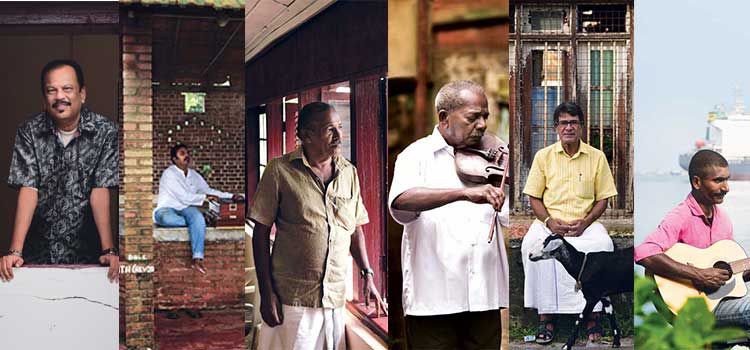
On the streets of Fort Kochi, a group of musicians from the heydays of the 80s and 90s proves Nietzsche right on stating that “life without music would be a mistake”
Words by Likhitha P Nair and Photographs by Laiju
SUSTAINING NOTES
Junior Mehboob, Hindustani Singer
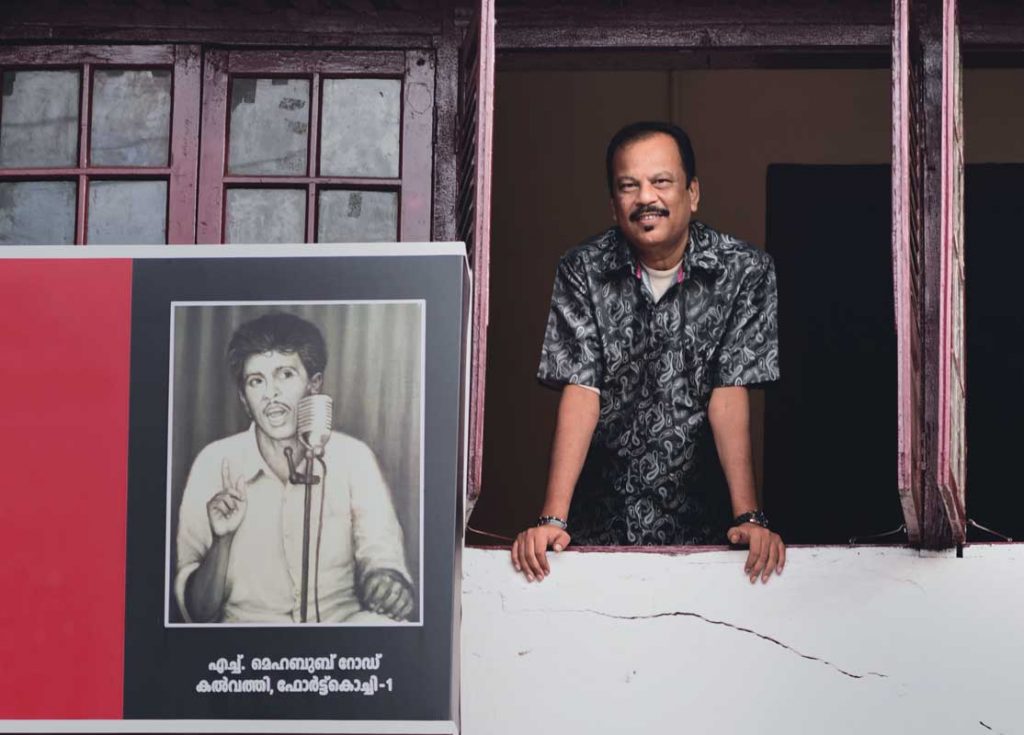
Mehboob Orchestra in Fort Kochi is a gallery of memories. Sitting close to a wall donned by portraits of many lives and years spent nurturing Gazal and its allure, is Junior Mehboob. His parents named him after H Mehboob, the mystical singer from Fort Kochi. This 64-year–old has been performing at the Abad Hotel in Chullikkal, Fort Kochi, for the last 30 years, but has been enchanting listeners since he was five. “Children these days get stages and applause. We were never lucky enough to have platforms like that,” he says. When Mehboob was young, the average remuneration for a wedding performance was 50 rupees. He did record playback for movies once, but it never satisfied the performer in him. His life and music is a saga. Of evergreen music that stands strong against the winds of time.
IMPASSIONED BY COLLEGE BOY
Kishore Abu, Hindustani Singer
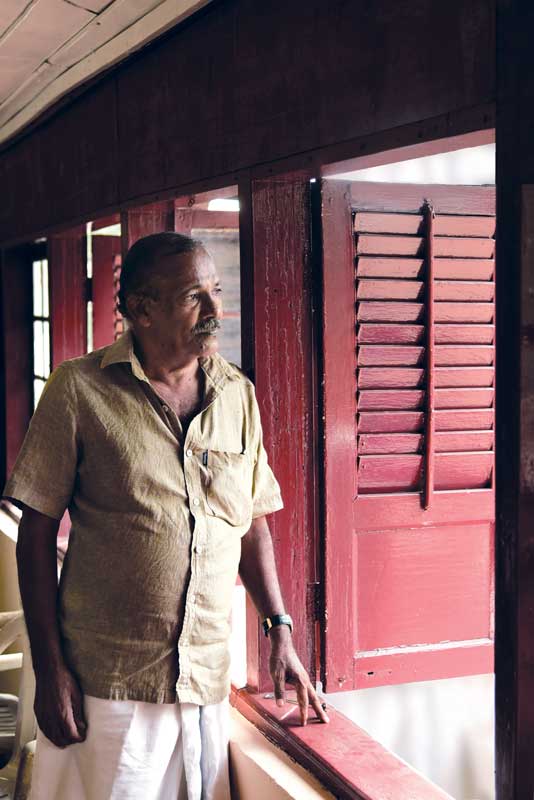
Kishore Abu was not born to love music, like many of his contemporaries. He was a student of Sacred Hearts College, Thevara, when he discovered that there was a singer in him. He went on to conquer many stages across Kerala from there on, captivating audiences with styles of Rafi, Mukesh and Mehboob. “Today when children sing, their families are proud. They are encouraged and praised. Back in our days, music was a distraction. Society only frowned at “crazy” people like us who never made money.” Abu’s fascination with Hindustani music has a clear reason. He feels Gazals touch the rich and the poor, alike and is the music of the soul. “I was a shy singer in the beginning. But now music is all I know,” he adds with a smile.
BURNING DESIRE
Reneesh Reju, Load Worker

The spark in his eyes conceal the wrinkles on his face from many years of hard labour. Reneesh Reju, a load worker in Vizhinjam Island found magic on an evening, while walking by Greater Cochin Development Authority complex with his friends – where they spotted a man playing the guitar. Ten years later, he is a guitar teacher performing Hindustani music on an acoustic guitar. He talks about times when he used to deal with dangerous chemicals at work. “Compounds like ammonia and urea burn your skin. I used to lose skin on my fingers and practice was painful. But nothing has stopped me.” Reneesh is at peace with the person music has made him – he has overcome so much with just willpower and passion. “Since that evening, I haven’t felt alone. Even with family around, I know music is what is mine and mine alone,” he says.
SOUL SONGSTER
Ibrahim Thuruthil, Mauplia Song Vocalist
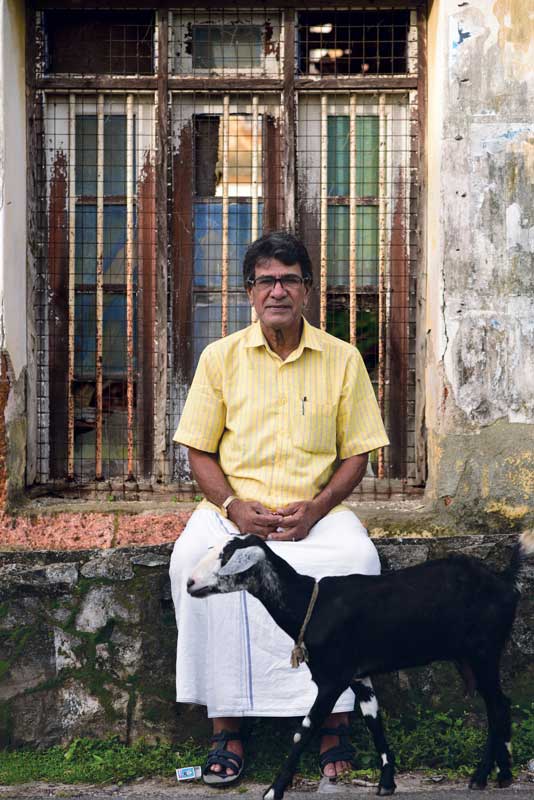
Ibrahim Thuruthil is probably one of the most underestimated musicians of his time. His music career was raised and fostered by the legendary H Mehboob himself. “When I was 12, I started singing at weddings, to welcome the groom. It was a tradition, part of a religious culture that never left me, or my music.” Ibrahim ventured into maupila music straying from Mehboob’s style later, yet entirely devoted to the ideologies of his teacher. He was a witness to the making of several historical events, that have all helped groom his voice from within. “Culture has changed now. Weddings don’t have maupila songs anymore. There is lifeless karaoke that people enjoy,” he says. Even with a whole day of Ramadan fasting drying up his eloquence, Ibrahim’s praise for his soul music found no limits.
TIMELESS SYMPHONY
Augustine John, Bunk Shop Owner
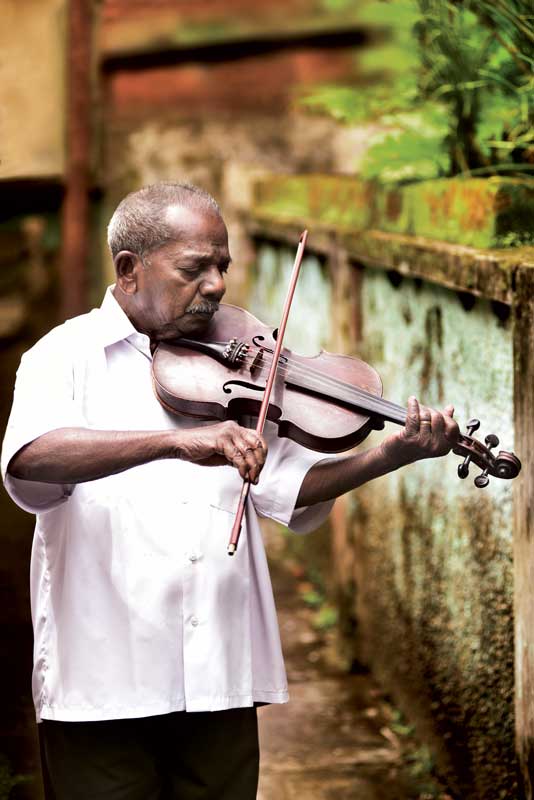
Unheeding of the faces and ears watching him, Pallipparambil Augustine John or “John Chetan” as many in Fort Kochi fondly address him, breaks into a tune on his 300-year-old Antonius Stradivarius violin. As the instrument hummed “mein shaayar thoh nahin”, in a rusty tone, this bunk shop owner in Amaravati surprised us. There were only 625 units of this violin ever made, and John inherited this priceless gift from his father, who got it from his friend. Our hearts skipped a beat seeing a news paper clipping, which said that another piece of the same instrument was auctioned in the UK for INR 72 crores! But for him, the legacy of it is worth a lot more. John, who is 79 now, has been playing violin for 48 years with various music and theatre troupes. “I don’t have many achievements to show. After movies and cassettes became common, theatre music died down, and people like me lost our chances. But I have no complaints. Passion comes with a cost.”
AN OBSCURE JOURNEY
Anwar R K, Auto-Driver
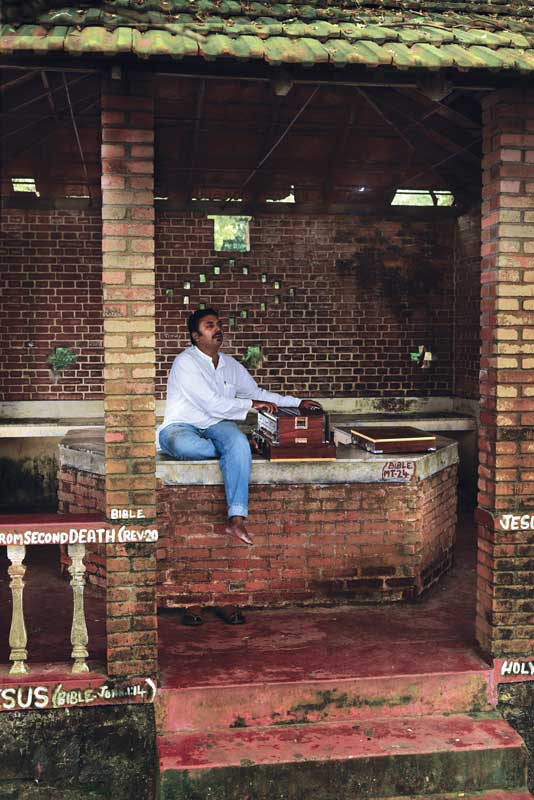
For Anwar, 20 years of harmonium and Gazal has only deepened his hunger for music. An auto driver by day, he is a pilgrim of music by dusk, until dawn. Father to three young girls, he is one of the oldest Gazal singers in Fort Kochi. He likes to stay a loner sometimes and derive new styles of expressing his music. “Clusters bring you taste when you know what you are capable of,” he claims, adding that a musician’s passion needs to be born within him. “There is no differentiating you and your tunes. Music is you, for you,” expresses Anwar.
Art
Navratri 2024: Celebrating the Nine Colours and Their Significance

Navratri, the festival that spans nine nights, is one of the most auspicious and widely celebrated festivals in India. Dedicated to the worship of Goddess Durga in her nine forms, each day of Navratri holds special significance, marked by a distinct color that carries deep spiritual and cultural meaning. As we prepare for Navratri 2024, let’s explore the nine colors associated with each day, their significance, and how they inspire devotion, positivity, and harmony.
Day 1: Yellow

On Thursday, embrace the uplifting energy of yellow as you celebrate Navratri with optimism and joy. This warm and cheerful color symbolizes happiness and radiates positivity, keeping you in high spirits throughout the day.
Day 2: Green

On Friday, wear green, a color that represents nature, growth, and harmony. It evokes a sense of peace and serenity, while also symbolizing new beginnings. Let the vibrant energy of green invite tranquility and the blessings of the Goddess into your life.
Day 3: Grey

Saturday calls for the subtle sophistication of grey. This balanced color keeps you grounded and calm, symbolizing composure and understated elegance. It’s perfect for those who want to participate in Navratri with grace while making a refined style statement.
Day 4: Orange

On Sunday, adorn yourself in the vibrant hue of orange. This color embodies warmth, exuberance, and positivity. Wearing orange during Navratri invokes an upbeat energy, bringing vitality and a lively spirit to your celebrations.
Day 5: White

Start your Monday with the purity and serenity of white. Associated with innocence and spiritual clarity, this color invites inner peace and helps you connect with the divine blessings of the Goddess, offering a sense of security and calm.
Day 6: Red

On Tuesday, red takes center stage, symbolizing passion, love, and strength. As one of the most auspicious colors, red is often offered to the Goddess in the form of a Chunri. Wearing red fills you with energy, vigor, and the vibrant spirit of Navratri.
Day 7: Royal Blue

Wednesday’s color is royal blue, representing elegance, richness, and tranquility. This deep, vivid shade of blue exudes confidence and sophistication, making it an ideal choice for those who want to celebrate Navratri with style and grace.
Day 8: Pink

On Thursday, don the charming hue of pink, a symbol of universal love, affection, and harmony. Pink is a color that adds a soft touch of warmth and approachability, making it perfect for creating a loving and joyful atmosphere during the festivities.
Day 9: Purple

On the final day of Navratri, purple takes the spotlight. Associated with luxury, nobility, and grandeur, purple invites opulence into your life. Wearing this regal color while worshipping Navdurga bestows blessings of prosperity and richness, making it the perfect way to end your Navratri celebrations.
Luxury
Cartier’s New High Jewellery Collection is a Love For The Wild

In 2021, the American Museum of Natural History in New York presented Beautiful Creatures, an exhibition showcasing some of the most eccentric jewellery designs of the past century. One standout piece was the iconic crocodile necklace of Mexican actress María Félix, a loyal Cartier patron. Félix, renowned for her bold sense of style, famously strolled into Cartier’s Paris store in 1975 with her pet crocodile, requesting a necklace in its likeness. Cartier delivered, crafting two intertwined crocodiles encrusted with over a thousand emeralds and yellow diamonds. For Félix, crocodiles symbolized freedom, an embodiment of the spirit she associated with Mexico’s Golden Age of cinema.

Fast forward to today, and Félix’s wildest dreams seem to have come to life at Cartier’s latest high jewellery collection, Nature Sauvage, previewed at the historic Kursalon Hübner gallery in Vienna. Among the star pieces is the Koaga necklace, a masterful creation where a zebra clasps an emerald-cut diamond and a 6.25-carat pear-shaped rubellite in its mouth. The zebra’s form is exquisitely rendered in alternating onyx stripes and pavé diamonds, making the creature feel almost lifelike.
The relationship between animals and jewellery has deep mythological roots, often glorified through rituals and symbolism. In ancient Egypt, scarab beetles were worn as earrings to signify respect for life’s cyclical nature. Meanwhile, in Hellenistic Greece, gods and goddesses took on the forms of winged creatures in adornment. So, what is it about animal-themed jewellery that continues to captivate us? According to Amanda Triossi, a jewellery historian based in Rome, the allure lies in our primal instincts: “Wearing wild animals like panthers or tigers gives one the sense of having conquered them. It’s empowering, as if you inherit the animal’s strength and attributes.”

Cartier captures this essence beautifully in its Amphista necklace. Featuring two intertwined snakes with diamond scales set with emeralds, their heads adorned with kite-shaped diamonds, the necklace echoes ancient Chinese philosophy’s yin-yang balance. The pièce de résistance? Nine octagonal Colombian emeralds, weighing a total of 14.72 carats.
Triossi also notes that many historical heroes are often depicted draped in the skins of animals they’ve vanquished, a symbol of triumph. Today, jewellery transforms that symbol into something precious and eternal—animal skins reimagined in imperishable materials.

Later that evening, at a celebration held at Vienna’s Kunsthistorisches Museum, the largest in Austria, the enchantment of Cartier’s collection was heightened. The museum’s octagonal domes featured paintings of animals dancing with angels, setting the stage for a magical night. Guests were greeted by masterpieces such as Rembrandt’s Self-Portrait and Caravaggio’s Madonna of the Rosary, alongside Cartier page boys in their signature red hats. The evening’s soundtrack, a seamless blend of Bach and Kygo, was curated by DJ Gillian Sagansky, lending a modern twist to the classical ambiance.
The following day brought another cultural adventure—a visit to Otto Wagner’s Villa, a stunning summer palace designed by the famed architect. The paintings adorning the villa’s walls depicted animals in various forms—some caught in purgatory, others wandering the biblical bardo, with alligators restlessly emerging from swampy landscapes.
Luxury
Indian Craftsmanship Meets Italian Savoir Faire : Rahul Mishra x Tod’s

Quiet luxury was expected to dominate for a while, with many predicting that the return of bold, extravagant fashion would take its time. However, maximalism seems to be making a swift comeback, especially in the realm of designer collaborations. Hot on the heels of the vibrant, print-heavy H&M x Anamika Khanna collection, another limited-edition line has arrived, celebrating opulent luxury: Rahul Mishra x Tod’s.
As part of Tod’s T-Factory project, which features exclusive collaborations with creative innovators, this marks Indian couturier Rahul Mishra’s debut in the international accessories space.

Mishra is a true ambassador of Indian design. Along with his wife Divya Mishra, he leads his eponymous label, which has brought the essence of India to the global stage in remarkable ways. A regular at Paris Fashion Week and the first Indian designer to showcase at Paris Haute Couture Week, his creations have adorned celebrities like Zendaya and Mark Zuckerberg, and have graced magazine covers in South Korea, China, and Europe. With such a path-defining legacy, it’s no surprise that Mishra and his visionary label were Tod’s natural choice for their first-ever Indian collaboration.
Mishra describes this collaboration as a beautiful fusion of “Italian craftsmanship serving as the canvas for Indian vision.” Tod’s iconic Gommino loafers and mules, along with the Di Bag and T Timeless shoulder bag, have been reimagined with intricate resham embroidery, crystals, and sequins—all meticulously hand-embroidered at Mishra’s atelier in Noida. “It was a technically challenging process that took time to perfect. I can confidently say these are some of the finest bags and shoes you’ll ever witness, in terms of craftsmanship and longevity. Such pieces are forever,” Mishra proudly shares.

Crafted entirely between India and Italy, the limited-edition pieces from this collection are a true love letter to the artisanal heritage of both nations. “There’s a beauty in the teamwork here,” Mishra explains. “We received raw materials from Italy and worked on integrating our embroideries seamlessly into their leather. The pieces were then sent back to Tod’s, where they transformed them into stunning, three-dimensional products. In that sense, it’s been a genuine collaboration between Italy and India.”
Mishra firmly believes that the future of global design will be shaped by a global Indian aesthetic. “Just as French, Italian, British, and Japanese designs are now seen as universal,” he explains. This collaboration marks a significant step in advancing that narrative. “When you push the boundaries of ‘handmade in India’ to be respected at the pinnacle of luxury, everything else will naturally follow,” he emphasizes.
-

 Style11 months ago
Style11 months agoBridal Guide : Best Looks of Radhika Merchant Ambani
-

 Fashion1 year ago
Fashion1 year agoMost Discussed Ajrakh Saree of Alia Bhatt
-

 Entertainment1 year ago
Entertainment1 year agoBridal Bliss : All Bridal Looks of Swasika Vijay
-

 Movies1 year ago
Movies1 year agoA Nostalgic Journey Through Love &Cinema : Best Bollywood Romantic 90s Movies
-

 AD8 months ago
AD8 months agoPopular Curtain Fabrics to Consider for Your Home
-

 Fashion1 year ago
Fashion1 year agoMajor Denim Trends You Need To Know in 2024
-

 Events9 months ago
Events9 months agoBest of Fashion Looks : Diya Krishna Wedding
-

 Events8 months ago
Events8 months agoThe L’Oréal Paris Show at Paris Fashion Week 2024





























